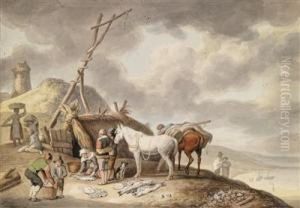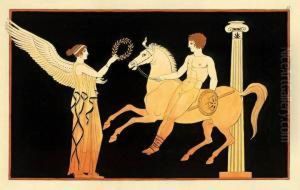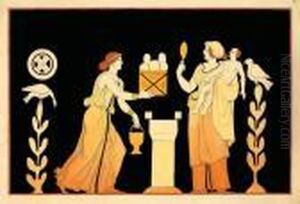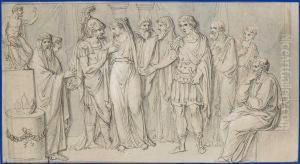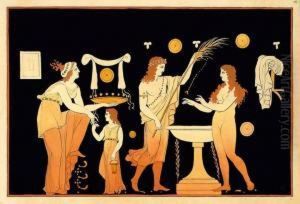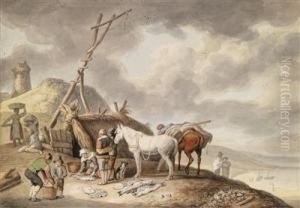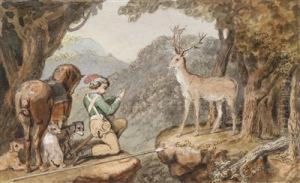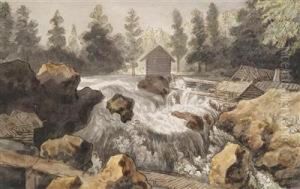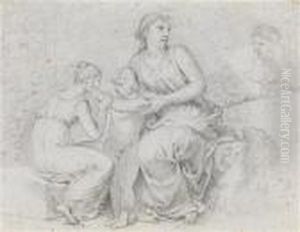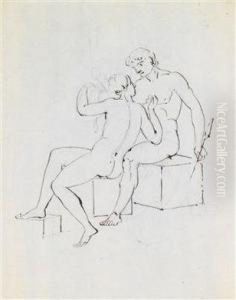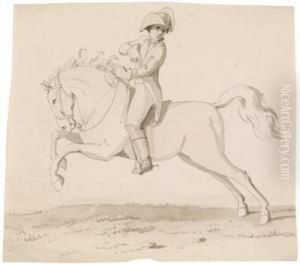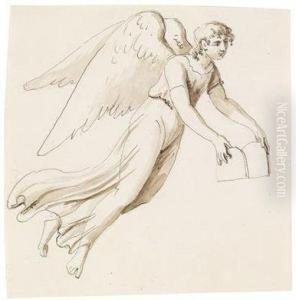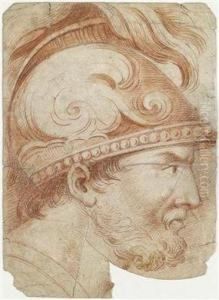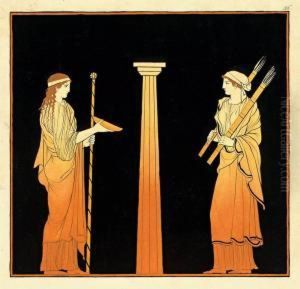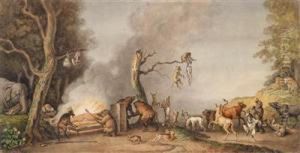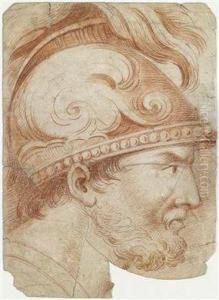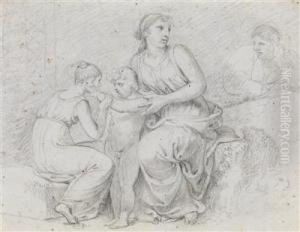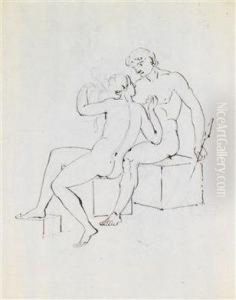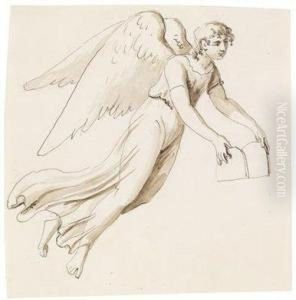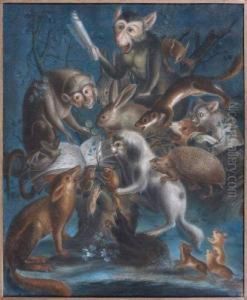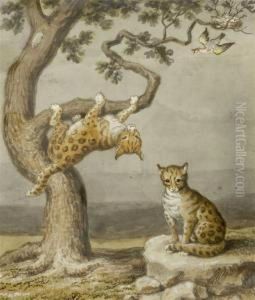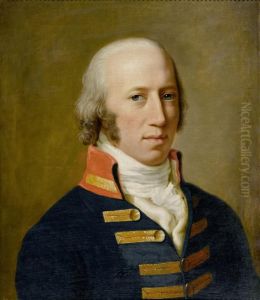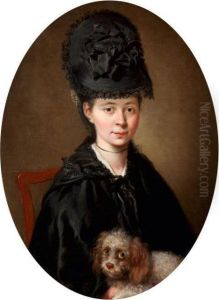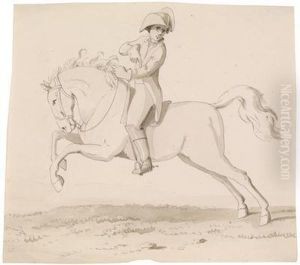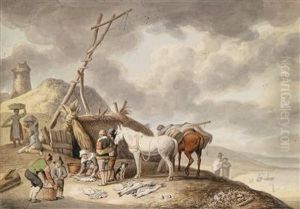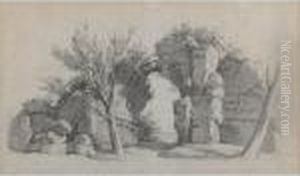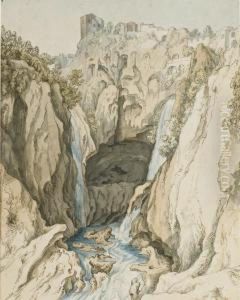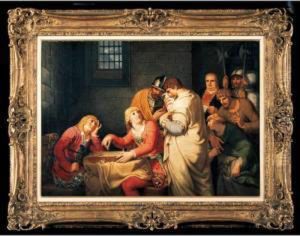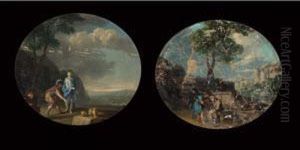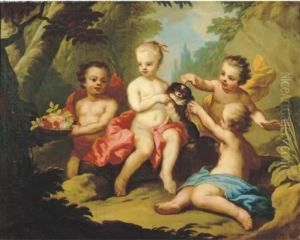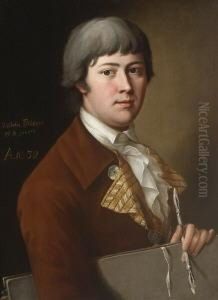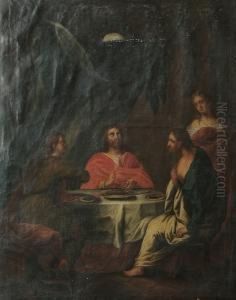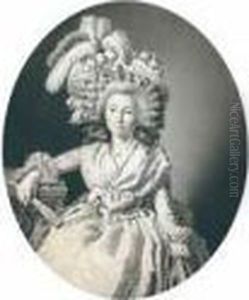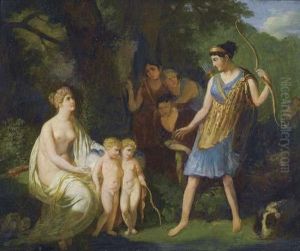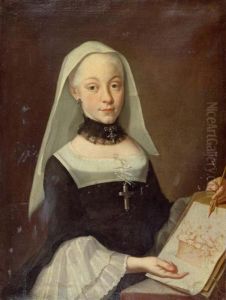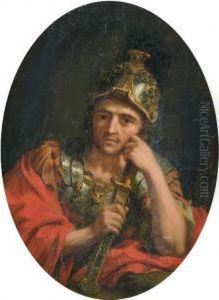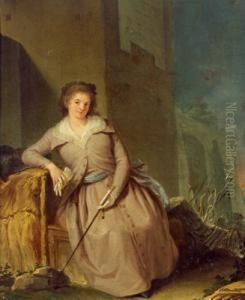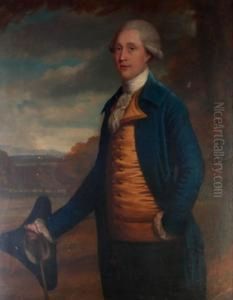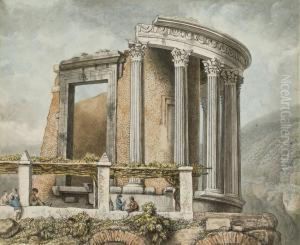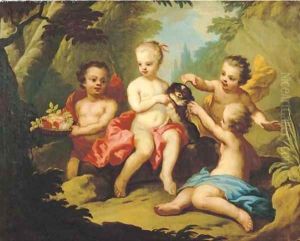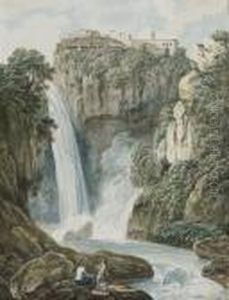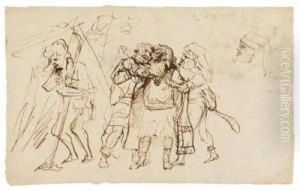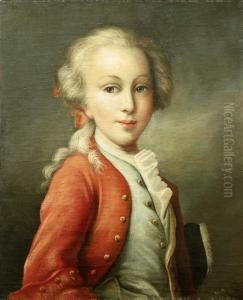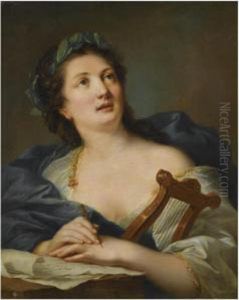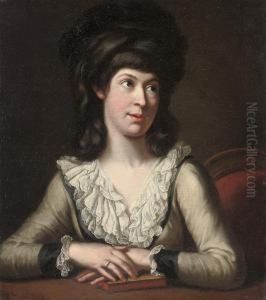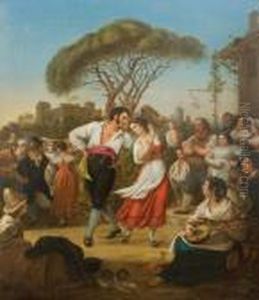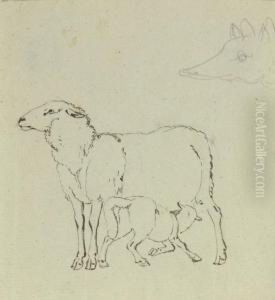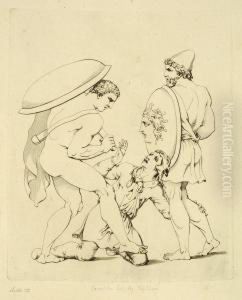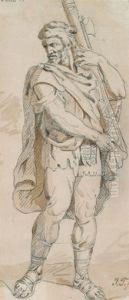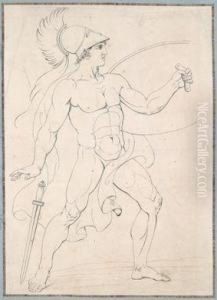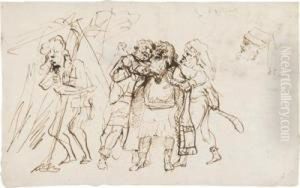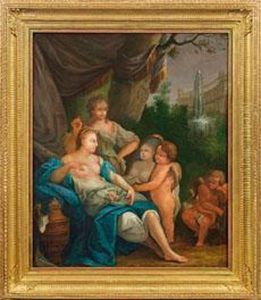Johann Heinrich Wilhelm Tischbein I Paintings
Johann Heinrich Wilhelm Tischbein, commonly known as Goethe Tischbein due to his association with the famous German writer Johann Wolfgang von Goethe, was an eminent German painter from the 18th century. Born on February 15, 1751, in Haina, Tischbein hailed from a family with a strong artistic tradition; he was part of a dynasty of painters that spread across several generations.
Tischbein began his artistic training under his uncle, Johann Jacob Tischbein, in Hamburg. He later continued his studies in Paris and Rome, where he became influenced by the Neoclassical style. His time in Rome was particularly formative, as it was here that he developed a friendship with Goethe, who was on his Italian Journey (Italienische Reise) during the years 1786-1788. Tischbein's most famous painting, 'Goethe in the Roman Campagna' (1787), depicts the poet in the Italian countryside and is a testament to their friendship and Tischbein's skill in portraiture.
Throughout his career, Tischbein was a prolific artist, creating portraits, historical scenes, and illustrations. He held various positions of distinction, including director of the art academy in Naples, where he moved in 1789. During his stay in Italy, Tischbein was exposed to the rich artistic heritage of the region, which influenced his style and his teaching methods.
Towards the end of his life, Tischbein returned to Germany. He continued to work and teach in various cities, such as Hamburg, until his death on June 26, 1829, in Eutin. Tischbein's legacy is marked by his contributions to German Neoclassicism and his role in documenting the cultural milieu of his time, including his portraits of Goethe, which remain iconic images of the German literary giant.
